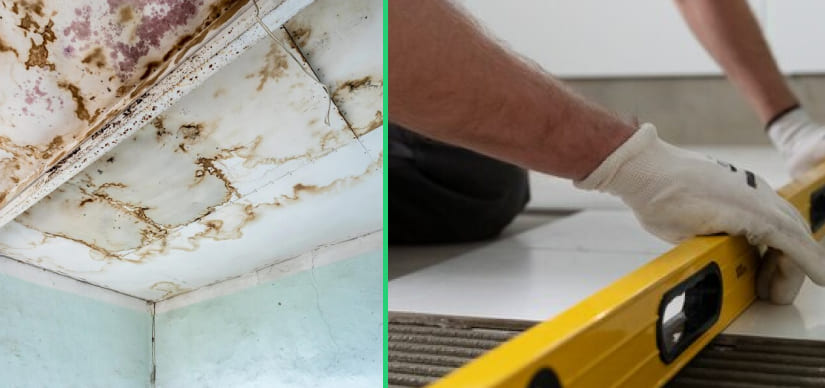6 Red Flags That Point to a Costly Foundation Slab Leak
Views : 1228

Introduction
Anya always took great pride in the maintenance of her house. She’d painted the trim and decorated her house for endless hours. However, the house started to smell oddly musty one day. She ignored it at first as just the moist air, however as days stretched into weeks, it became more and more pronounced.
Anya found a tiny wet spot on her living area carpet early one morning. Her spine tingled as she raised the rug to reveal what was beneath it. There was a thin drip of water seeping through a tiny crack in the wet concrete slab below. Anya discovered right away that it was a leaky slab, a sneaky, silent issue that, if ignored, could cost thousands of dollars in repairs. So without any delay, she called an expert in slab leak detection in San Diego to check it out.
What is a Slab Leak?
According to Anaya’s plumber, this is a typical issue in older homes because aging pipes just get more brittle. However, her house was in good condition. ,yet the leak occurred. And to her surprise, the leak was just the size of a pinhole. But the damage was immense.
Homes with concrete slab foundations as opposed to pier-and-beam designs are the only ones that experience slab leaks. A slab leak is a type of plumbing leak that happens where the water line is buried beneath the concrete slab. In warm-weathered Southern and Western states, where ground temperature fluctuation is less of an issue, slab foundations are a popular choice for construction.
Slab Leak Repair Cost
Broadly speaking the expense of fixing a slab leak depends on several variables, such as the condition of the pipelines and the time of problem detection. It might be between 1,200 dollars and ten thousand dollars.
Regarding slab leaks, time is critical. For slab leak detection in San Diego and a solution, get in touch with your plumber right away if you encounter any of these symptoms.
6 Signs You Have a Slab Leak
1. Seizing Hot Spots
Imagine that the wooden floor over the foundation has random hot or warm spots that you feel when you walk through your house barefoot. These small areas, sometimes referred to as “hot spots,” usually line up with the course of a hot water pipe leak.
In addition to the possibility of burns or skin irritation from extended exposure to hot spots, kids and pets that are young should also be kept away from areas with leaky hot water lines. San Diego leak detection services should be contacted as soon as possible if you face this issue for a longer time.
2. Water Pooling Here and There
You might notice water collecting outside your house close to the exterior walls or foundation if you are experiencing a slab leak. Puddles in garages or stagnant water in basements are other typical indicators.
While pooling can result from excessive rainfall, standing water is still a concern. Pay attention to stagnant water that persists for several days following dry weather to distinguish between water from rain and a possible slab leak.
3. The Odor of Mold or Mildew
Pet and cooking odors can occasionally surface in a house, though they eventually go away. One of the most dangerous consequences of slab leaks is mold or mildew, which can be detected by a damp smell.
Mold and mildew smells do not go away like other odors. They can grow stronger and more disagreeable over time. If you detect this smell and think there may be a slab leak, contact a professional straight away because they are hazardous to your health.
4. Unexpected Rise in The Water Bill
The most recent data from World Population Review indicates that the average water bill in a month is $39.16 in the United States. Note the average monthly bill might be different depending on where you live and water usage.
You should anticipate a spike in utility bills when engaging in summertime activities like gardening or refreshing in the sprinkler. But any notable or unexpected rise in your bills is cause for concern. As much as ninety gallons of water can be wasted daily by household leaks in your home, including under your slab, based on the data of EPA.
5. The sound of flowing water
It’s a warning if the shower and sink faucets are closed but you continue to hear the noise of water running. There might be a leak beneath your slab if your washing machine and dishwasher aren’t operating. It doesn’t matter if the sound is constant or sporadic, its persistence will probably reveal it.
A leak can originate from wherever that has pipes, even behind drywall, so pay close attention to where the leak is coming from. Additionally, keep an eye on your water meter to see if it displays any water usage even after you have turned off all of your water sources. Give a call to your plumber for slab leak detection in San Diego if it persists.
6. Floors Warping
One can identify a slab leak by looking for floor warping. The concrete slab may grow or shrink unevenly if water collects beneath the foundation. This may cause the flooring to exhibit observable dips or bulges, a phenomenon known as warping.
In addition to being ugly, these irregularities can be dangerous because they can lead to trips and falls. As per San Diego leak detection services it’s critical to look into the matter further if you observe any indications of warping in the floor because a slab leak may be the source of the problem.
4 Ways To Fix a Slab Leak
1. Rerouting
Rerouting the pipe is frequently the least invasive and most cost-effective way to address a slab leak. In this case, Andy rerouted the water lines around the damaged pipe under the kitchen, saving a good amount of money that was needed for renovation.
By installing a new pipe that avoids the damaged one and leaves the old pipe in place, a plumber may redirect a water line. Even though it might require drilling into the walls and ceiling, this is typically less expensive than having tile or additional components replaced.
2. Spot Repair
Spot repair works best for an individual leak that is reasonably accessible. To fix a small portion of a dripping pipeline or sewer line, one must cut through concrete. Although this is a typical commercial plumbing solution (found, for example, in warehouses), the extensive restoration required may make it expensive and inconvenient for residential use. Additionally, if the pipes are in bad shape, it won’t last because it will only provide you with a short-term reprieve till another leak occurs.
3. Pipelining
San Diego leak detection services apply a thin layer of harmless epoxy coating over the exterior of pipes known as pipelining. It’s a low-cost way to seal small pinholes in pipes made of copper or small holes in main drainage lines. It isn’t appropriate for more serious damage, though.
4. Trenchless Repair
Because the leak can be fixed without excavating the floor, this method spares demolition. It’s a less intrusive choice that might work well for some types of properties. Find out from an expert if it’s appropriate for your house.
Final Takeaway
Leaks in foundation slabs can be an expensive and inconvenient issue. It can cause structural damage, the growth of mold, as well as water ruining your property if left untreated. Understanding the six warning signs covered in this article will help you early slab leak detection in San Diego and take action to resolve them before they get worse.
A slab leak? Give EZ Plumbing a call right now. We are experts in slab leak detection in San Diego and fix them in time, saving you money.
